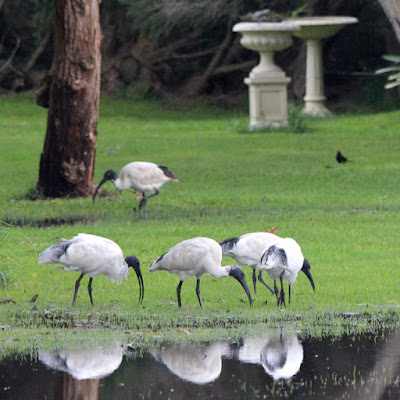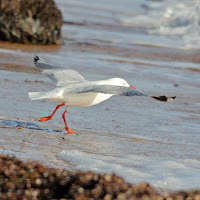Unfortunately this bird species appears to have affected native bird populations. You can't move around Melbourne for any length of time without seeing them. The common myna is listed as one of the World's Top 100 worst invasive species by the International Union for Conservation of Nature (IUCN website here).
 |
| The Common myna (Acridotheres tristis) in typically aggressive pose |
Chloe (1993-2009)
We think Digbee was born around 2005. We got him from the RSPCA in March this year. It would be fair to say he is sometimes more at home when indoors!



















































